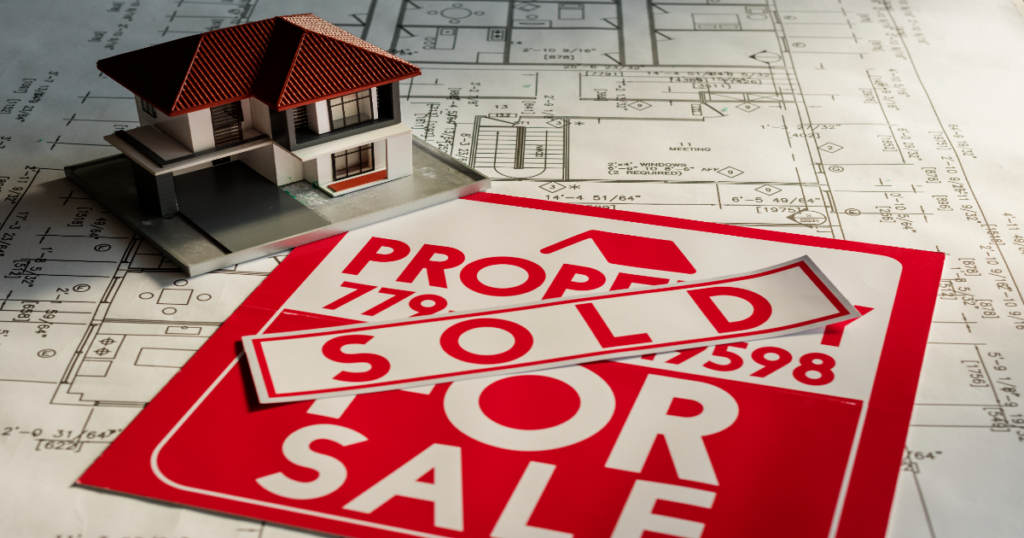How to List Property on Real Estate Online Auctions
An online real estate auction is a method for buying and selling property using an internet-based platform. Unlike traditional real estate transactions involving direct negotiations between buyers and sellers, an online auction allows multiple potential buyers to bid on properties within a specified timeframe.
How Does it Work?
The seller lists the property on an auction platform, and buyers place incremental bids until the auction ends. Moreover, the highest bidder usually wins the property, assuming the final bid meets or exceeds the reserve price set by the seller.
Auction Types
Absolute Auction: In this type of auction, the property goes to the highest bidder, regardless of the bid amount. Moreover, it’s akin to a no-holds-barred wrestling match where the last person standing wins, irrespective of how they got there.
Reserve Auction: Here, the property has a set minimum price, and the sale is only finalized if a bid surpasses this threshold. Furthermore, consider it a talent show where participants must earn certain points from the judges to advance to the next round.
Benefits and Drawbacks
Benefits:
- Speed: The online auction format offers a swiftness that traditional sales methods often can’t match. Furthermore, it’s similar to taking a bullet train instead of a local commuter train; you reach your destination much faster.
- Transparency: With all bids openly visible, a level playing field is established, akin to a public leaderboard in a competition, where everyone knows the score and can strategize accordingly.
- Global Reach: The online format allows sellers to tap into a worldwide audience, much like how social media platforms connect people from around the globe.
- Control: Sellers can dictate various terms such as reserve prices and auction timing, providing a level of control akin to a conductor leading an orchestra, setting the tempo and flow of the music.
Drawbacks:
- Complexity: Auctions can be daunting for newcomers. Moreover, it is like learning a new board game with intricate rules and strategies.
- Unpredictability: The absence of a guaranteed sale or a specific price point introduces an element of risk, somewhat similar to fishing in a vast ocean. Furthermore, you may catch something big or come up empty-handed.
- Fees: Various charges, from listing fees to a slice of the final sale, can add up, resembling the toll gates one encounters on a long highway journey.
- Emotional Factors: The rapid pace of auctions can trigger hasty decisions from buyers. Moreover, akin to the impulse purchases one might make when under a time crunch in a shopping spree.
Preparing Your Property for Auction
Conduct a Property Assessment
Why Assess?
Performing a pre-listing assessment of your property serves as your personal “blueprint” of the home’s current condition. Furthermore, with this information, you can proactively tackle any issues that might negatively impact the sale price or deter prospective buyers. Moreover, think of this assessment as a rehearsal before the main event; you get to correct any errors and fine-tune your performance.
Steps to Take
- Hire a Professional Appraiser: Engaging a qualified appraiser to determine your property’s worth ensures that you have a precise valuation. Moreover, it’s similar to getting an expert opinion before making a significant investment; you secure reliable information to make informed decisions.
- Inspect the Property: Consequently, commissioning a certified home inspector to scrutinize the property for structural or functional issues is akin to having a mechanic examine a used car before purchase. Furthermore, you’ll know what needs fixing and can plan accordingly.
- Get an Energy Audit: Conducting an energy audit can make your property more appealing because energy-efficient homes often attract more bidders. Moreover, imagine this as adding a unique skill to your resume. In addition, it makes you more marketable and stands out to potential employers—or, in this case, buyers.
Preparing a Property Report
Upon completing the assessment, assemble a comprehensive report to share with potential buyers. Moreover, this enhances transparency and could speed up the selling process. Furthermore, it’s somewhat like providing a syllabus at the start of a course; students (or buyers, in this context) know exactly what to expect and can prepare accordingly.
Home Staging Tips
Objective of Staging
Home staging primarily aims to cast the property in its best possible light to attract many potential buyers. Moreover, like a director staging a play, the objective is to create a setting where buyers can easily visualize themselves as part of the scene.
Effective Staging Tips
- Declutter: Clearing personal items from the space acts as a blank canvas, allowing buyers to imagine their lives filling it. This is similar to clearing the stage before a new act in a play. Moreover, it provides room for a fresh narrative.
- Neutral Colors: Employing neutral colors for walls and upholstery cultivates a universally appealing environment. Think of these shades as the background music in a film—complementary but not overpowering.
- Highlight Features: Draw attention to the property’s standout elements, such as a cozy fireplace or expansive backyard, akin to how a movie trailer highlights the best scenes to attract an audience.
- Ambiance: Utilizing soft lighting and background music creates an atmosphere that invites prospective buyers to feel at home, much like the welcoming environment of a high-end boutique.
Professional Photography and Virtual Tours
Why It Matters
First impressions are usually formed through visuals, especially in online listings. High-quality photographs and virtual tours are a magnet for potential buyer interest, acting as the book cover that entices someone to explore the contents further.
Steps for Creating Quality Visuals
- Hire a Professional Photographer: Opting for professional photography can make a pivotal difference in how the property is received, much like professional packaging can elevate a product’s appeal.
- Drone Shots: For properties with expansive land or unique features, aerial drone shots can provide an intriguing perspective. This is similar to having an overhead camera angle in a sports event; it offers a viewpoint that ground-level shots can’t capture.
- Virtual Tours: Utilizing 360-degree cameras for virtual tours allows potential buyers to experience the property more interactive and immersively, similar to a video game that lets you explore a digital world freely.
Legal Considerations
Auction Terms and Conditions
Clearly, articulated terms and conditions act as the rulebook for your auction, helping to preempt misunderstandings and reduce the likelihood of legal issues down the road. Furthermore, consider these terms the DNA of the auction—each element contributes to the overall function and structure, ensuring that both buyers and sellers know what to expect.
Components to Include
Starting Bid: Designate a minimum bid to kick off the auction, much like the starting line in a race marks where competitors begin their journey.
Bid Increments: Define the smallest amount by which each subsequent bid must surpass the current highest bid. Moreover, this can be likened to setting the basic rules in a poker game; everyone must know the minimum stakes.
Duration: Clearly outline the auction’s start and end times, acting as bookends to the event. Moreover, it’s akin to specifying the time frame for a timed exam. Furthermore, participants know how long they have to complete the task.
Payment Terms: Provide details about accepted payment methods and deadlines, serving as the “user manual” for completing the purchase.
Return Policy: State the conditions for a return or cancellation. Furthermore, this is analogous to the safety instructions on a piece of machinery. Moreover, they explain what to do if things don’t go as planned.
Legal Review
To avoid unintentional legal pitfalls, it’s advisable to have an attorney scrutinize the terms and conditions. This is similar to having an editor review a manuscript before publication. Moreover, they can catch errors or omissions that you might overlook, safeguarding the interests of both buyer and seller.
Property Disclosures
The Necessity for Transparency
Being transparent about the property’s condition is not just a moral obligation but often a legal necessity. Omitting known defects is a shortcut that could land you in legal hot water later. In this context, transparency acts like the list of ingredients on a food package; not disclosing key components can result in significant repercussions.
Types of Disclosures
Structural Issues: Point out any known defects in the building’s framework, such as the foundation, roofing, or walls. Think of this as providing a health report for the property, highlighting any pre-existing conditions that may require attention.
Environmental Risks: Notify potential bidders of environmental hazards like lead paint or asbestos. This is akin to flagging allergens on a food label; some individuals may be highly sensitive and need this critical information.
Legal Restrictions: Make buyers aware of zoning laws, historic designations, or other legal boundaries that could impact their use of the property. This is similar to the end-user license agreement (EULA) for software; it outlines what you can and cannot do with the product.
Presentation
Typically, these disclosures are laid out in a written document accessible to all potential bidders before the auction’s commencement. Moreover, this is comparable to pre-flight safety demonstrations, equipping passengers with the necessary information to handle unexpected situations.
Reserve Price Setting
The reserve price serves as the auction’s safety net, setting the minimum sum a seller will accept for the property. If bids fail to reach this level, the seller retains the right to hold onto the property. Think of it as the “base camp” in a mountain-climbing expedition; it’s the minimum level to which you’re willing to descend.
Strategic Considerations
Setting Too High: Elevating the reserve price too much can act like a steep admission fee, potentially scaring off would-be bidders before the auction starts.
Setting Too Low: Conversely, a low reserve price functions like a promotional sale, attracting more people and risking a final sale below your desired value.
Legal Obligations
Different jurisdictions have varying rules regarding the disclosure of the reserve price. Think of this as regional speed limits; you must know the local laws to avoid infractions. To comply with legal standards, it’s advisable to consult local regulations to understand your disclosure obligations.
Choosing an Auction Platform
Assessing Platform Credibility
Significance of Credibility
Choosing a credible auction platform is like selecting a reputable bank; it minimizes risks tied to fraudulent activities and unsatisfactory services. This decision affects the seller and potential buyers, who must find the platform trustworthy enough to engage with.
Metrics for Assessment
Customer Reviews: Online reviews act as the modern word-of-mouth, providing insights into user satisfaction. Think of them as traveler reviews on a hotel booking site, guiding your selection based on previous experiences.
Business Accreditation: Determine whether the platform has received accreditations from respected institutions or industry associations. This is akin to a restaurant displaying its health inspection grade; it lends an additional layer of credibility.
Years in Business: The platform’s longevity can often indicate its reliability. This is similar to choosing a tried-and-true brand over a new entrant in the market; the former has a proven track record.
Transparency: Reputable platforms will openly share information regarding their terms of service, fees, and operational specifics. This transparency can be likened to the nutrition facts on food packaging, allowing consumers to make informed choices
Fees and Commission Structure
Importance of Understanding Fees
Understanding the fee structure is similar to knowing the total cost of ownership when buying a car. It enables you to accurately calculate the net proceeds you anticipate from the auction, ensuring no unpleasant financial surprises.
Common Fee Types
Listing Fees: This is the upfront cost for placing your property on the auction platform. Think of it as the ticket price for entering an exclusive event.
Final Value Fee: This fee is a percentage of the property’s final selling price. It’s akin to a commission that a real estate agent would take upon successfully selling a home.
Additional Features Fees: These are costs for extra amenities like prominent listing placements or extended auction durations. Consider these analogous to optional upgrades when purchasing a new vehicle.
Fee Comparison
As you shop around for the best deal on a new phone plan or airline ticket, comparing the fee structures across various auction platforms is wise. This allows you to assess which platform provides the best value for the services rendered, essentially enabling you to get the most bang for your buck.
User Interface and Technical Support
The user interface of an auction platform is like the dashboard of a car; it controls how smoothly you can navigate the auction process. A well-crafted interface simplifies the listing process, making it easier for sellers to manage the auction and for buyers to participate.
Criteria for UI Assessment
Ease of Use: A user-friendly platform is equivalent to an easy-to-read map; it helps you reach your destination without unnecessary detours or frustrations.
Mobile Responsiveness: The ability of the platform to adapt to various devices is like a good public transportation system that accommodates all passengers, regardless of whether they are on a bus, train, or ferry.
Features: Additional platform features such as real-time bid tracking act like GPS or advanced driving assistance systems in a car, enhancing your ability to navigate the auction.
Technical Support
Imagine running into a roadblock in an unfamiliar area; the presence of reliable customer service and technical support is as essential as having a responsive road assistance service. This becomes particularly invaluable if you or the potential buyers encounter technical difficulties during the auction.
Setting Up the Listing
Creating an Account
Account Setup: What’s Involved?
Creating an account is similar to applying for a passport. You’ll need to supply personal and contact details and often, financial information for payment processing.
Security Measures
Setting up a strong password is like installing a good lock on your front door. The ideal combination includes a mix of letters, numbers, and special characters to fortify your account’s security.
Verification Process
Just like airport security checks to confirm your identity before a flight, many auction platforms have verification processes. This typically involves uploading crucial documents such as identification and property deeds to confirm the validity of the listing.
Filling Out Property Details
The Backbone of Your Listing
Think of the property details as the ingredients list on a food package; it’s what potential buyers scrutinize to decide if the property fits their needs. The completeness and accuracy of this information directly impact buyer interest and trust.
Key Details to Include
Property Type: Clearly stating whether the property is residential, commercial, or land is like specifying whether a dish is vegetarian, vegan, or non-vegetarian. It immediately helps potential buyers identify if the listing aligns with their requirements.
Dimensions: Providing the square footage or acreage is similar to stating the weight or quantity of a product. It helps buyers visualize the space and compare it with their needs.
Amenities: Mentioning features such as pools, parking, or gyms is like listing the special ingredients in a gourmet dish. These can often be the deciding factors for buyers.
Location: Indicating proximity to landmarks, schools, or other amenities resembles a product’s “Made in” label, which can often add value or reassure buyers.
Condition: Identifying whether the property is new, refurbished, or in need of renovations is like mentioning a product’s condition. It sets expectations for the buyer regarding additional costs or work needed.
Legal Information: Including details like zoning, property taxes, and existing loans or liens is akin to listing nutritional information and allergen warnings on a food package. These details are mandatory for a transparent transaction.
Description
Crafting a compelling description is like writing a product review; it should list features and highlight benefits. Rather than merely stating “has a swimming pool,” add a layer of allure by saying, “Imagine spending your weekends hosting poolside BBQs in your private swimming pool.”
Uploading Media
Role of Media in Listings
In the realm of online auctions, images, and videos function as the cover of a book, setting the stage for what buyers can expect. They play a pivotal role in attracting attention and can significantly influence both click-through rates and the number of bids. Compelling media can pull potential buyers into your listing just as a well-designed book cover can entice readers to pick it up and look inside.
Best Practices
High-Resolution Photos: Think of high-resolution images as the equivalent of a book printed on high-quality paper. They add a level of professionalism and allure, making your property more enticing to potential buyers.
Multiple Angles: Displaying the property from various angles is like offering readers glimpses of different chapters. It provides a more comprehensive understanding of what’s on offer, making buyers more confident in their decision-making.
Virtual Tour: A virtual tour operates like an interactive table of contents, allowing potential buyers to experience the property more immersively, even without physically visiting the location.
File Formats: Making sure your media are in formats supported by the platform is similar to ensuring a book is available in formats readable by most e-readers. It guarantees that potential buyers can easily view your media.
Captioning and Annotation
Much like footnotes in a book that provide additional context or clarification, captions and annotations can enrich the media. They can point out unique features or provide additional details that might not be immediately apparent. These textual aids can help guide the viewer’s attention and make your listing more informative.
Marketing Your Auction
Think of social media as the modern-day town square. It’s where people gather, talk, and share interests. Unlike traditional advertising channels, social media allows for two-way communication and the ability to reach a vast or niche audience with relatively little expense. By using social media, you’re not just placing an ad in a newspaper and hoping someone sees it; you’re actively going to where the crowd is and engaging with them directly.
Effective Platforms
Facebook: This is like the general marketplace in that town square, where you can reach a diverse group of people through various methods such as groups or paid ads.
Instagram: Imagine Instagram as the art gallery or photography booth in the square. It’s a visually-driven platform that excels at showcasing images and videos. Properties with aesthetic appeal can shine here.
LinkedIn: LinkedIn is the business conference adjacent to the town square. It’s where professionals gather and is particularly effective for commercial properties or high-value residential listings.
Strategies for Engagement
Scheduled Posts: Consistency in posting is akin to a shopkeeper who always opens his shop simultaneously every day. It builds reliability and keeps your audience tuned in for updates.
Interactive Content: Interactive elements like polls or Q&A sessions act like street performers in our town square analogy. They grab attention and get people more actively involved in what’s happening, building a deeper connection with your audience.
Influencer Collaboration: Partnering with influencers is like co-hosting an event in the town square. It brings in their crowd along with yours, broadening your reach but still targeting those likely to be interested in your property.
Email Campaigns
The Power of Personalization:
In the marketing world, personalization is the equivalent of having a one-on-one conversation instead of shouting into a megaphone. It allows you to customize your message to make each recipient feel like you’re speaking directly to them. This sense of individual attention can elevate the sense of urgency and exclusivity, encouraging the recipient to act.
Components of an Effective Campaign
Subject Line: Imagine your email subject line as the headline of a news article. If it’s not compelling, the article won’t get read, no matter how important or exciting the content might be.
Content: Think of this as the main article itself. It needs to contain all the essential information but in an engaging manner. Just as a news story would provide who, what, where, when, and why, your email should give all the pertinent details about the auction and property, along with a link for further information or action.
CTA (Call to Action): In our news article analogy, the CTA is the compelling ending that encourages the reader to delve deeper into a related topic or take action. It’s a prompt, usually placed toward the end of your email, urging the recipient to visit your listing, make a bid, or perform some other specific action.
Timing and Frequency
Initial Announcement: This is the breaking news alert. It should go out when the listing becomes public to capture immediate interest and capitalize on initial enthusiasm.
Reminder Emails: Consider these your follow-up stories or updates on the original news. They serve to keep your audience informed about important upcoming events, such as the final day for bids, keeping the momentum going.
During the Auction
Monitoring Bids
The Importance of Real-Time Tracking:
Real-time bid tracking is like watching the stock market; it gives you the pulse of the auction at any given moment. This immediate feedback lets you adapt your strategy on the fly, whether sending out a targeted email to spur action or revising your social media ads.
Tools for Monitoring
Platform Dashboard: Think of this as your trading floor. Most auction platforms offer dashboards that give you a real-time overview of what’s happening. You can see the highest bid, how many people view your listing, and other key metrics.
Notifications: These are your market alerts. By setting up notifications, you can receive instant updates when a new bid comes in or when a significant milestone is achieved, like reaching the reserve price.
Analytics
Data analysis in this context is akin to a market research report. Understanding who is bidding and when can provide valuable information. For example, if you find that most of your bids come in during the evening, that might be the best time to send out a reminder email. Likewise, knowing the demographics of your bidders can help tailor future marketing strategies.
Communicating with Bidders
Why Direct Communication Matters
Think of your communication with potential buyers, like customer service at a high-end retailer. Providing prompt, transparent, and polite responses can elevate the buyers’ confidence, much like a customer is likelier to purchase an expensive item if the service is excellent.
Methods of Communication
Platform Chat: Many auction platforms have an integrated chat feature, similar to a customer service chat on an online store. This provides a quick and easy way for bidders to ask questions.
Email: This is your formal channel, similar to writing a letter of inquiry. Use email to handle more complex questions or to share documents like additional property disclosures or inspection reports.
Virtual Meetings: These are your private, one-on-one consultations. Hosting a virtual meeting for a high-stakes auction is akin to setting up a VIP service for a customer interested in a luxury purchase.
Best Practices
Prompt Responses: This is the equivalent of a sales associate quickly acknowledging and assisting a customer who enters a store. It demonstrates that you value the bidder’s interest and time.
Transparency: Just as a trustworthy retailer would answer questions about a product openly, be sure to provide clear and honest responses. Any deception could not only lose a bid but might also lead to legal complications.
Politeness: A courteous tone is like the pleasant demeanor of a store clerk, setting the stage for a positive interaction and potentially influencing the bidder’s willingness to place a higher bid.
Handling Reserve Price Not Met Scenarios
When Bids Fall Short
Imagine your auction like a theatrical performance that didn’t sell out on opening night. You have several options to try and fill those seats for the next show, each with its own trade-offs.
Options to Consider
Extend the Auction: Similar to extending the run of a play to attract more attendees, prolonging the auction timeline can attract more bidders who may have missed the initial listing. However, the risk is that it could signal desperation or a lack of interest, which may affect the perceived value of your property.
Negotiate: Consider this a behind-the-scenes negotiation with a group showing interest in a block of seats. You might offer them at a discounted rate rather than having them go empty. Likewise, you can directly negotiate with the highest bidder, possibly agreeing to lower terms than your reserve but better than receiving no bids.
Relist: This would be akin to closing the curtain and re-opening the play after some rebranding or changes. With relisting, you take the property off its current auction and list it again, maybe with a more attractive starting bid or enhanced listing features based on what you’ve learned.
Communication
Keep your audience in the loop. Just as theatergoers would appreciate knowing if a play’s run is extended or if ticket deals are available, bidders will appreciate updates on the auction’s status. It’s not only professional but also fosters goodwill and transparency.
Finalizing the Sale
Wrapping Up Financial Matters
Closing the sale after an auction is much like completing a carefully executed recipe; every ingredient—or in this case, financial component—must be carefully measured and added in the right sequence.
Payment Methods
Wire Transfer: Similar to the electronic version of a cashier’s check, this method is secure but could involve a waiting period, usually around 24-72 hours.
Cashier’s Check: Comparable to cash but more secure, this requires a physical exchange, which can be cumbersome but also offers a tangible sense of finality.
Platform-Specific: Consider this the house special, where the platform offers its own method, such as an integrated escrow service. It may be convenient, but it also has platform-specific rules and fees.
Escrow Service: An escrow acts as a neutral third party, akin to a referee in a game, holding the funds until both the buyer and the seller have fulfilled their contractual obligations. This extra layer can be particularly useful in high-value transactions.
Buyer’s Premium
In certain auctions, this extra charge functions like a service fee on a concert ticket; the venue or promoter adds it to cover costs. Paid by the winning bidder, the premium gets tacked onto the final bid price and is typically a percentage of it.
Legal Documentation
Drafting Contracts
Contracts serve as the bedrock of any real estate transaction, much like a foundation for a building. They outline the rights, responsibilities, and remedies for the buyer and the seller.
Elements of a Typical Real Estate Contract
Property Description: This is the legal fingerprint of the property, outlining its location, dimensions, and other specifics such as the property type and unique identifiers (like tax map numbers).
Price and Payment Terms: The contract will delineate the payment structure, akin to race rules, indicating how and when money changes hands between buyer and seller.
Conditions: Similar to medical check-ups before a rigorous athletic event, this section outlines what conditions.
Closing Date: Consider this the finish line in a race. The date on which all obligations must be fulfilled, and the property’s ownership changes hands.
Role of Legal Professionals
A real estate attorney guides you through the legal intricacies of property transactions. Their expertise ensures the contract adheres to local laws and addresses potential loopholes.
Transferring Ownership
Title Transfer
Transferring the title is akin to passing the baton in a relay race. Furthermore, it marks the official property handover from seller to buyer. Moreover, This usually involves both parties appearing before a notary public to authenticate the process. Thereby providing legal assurance that the property has changed hands legitimately.
Preparing for the Handover
Move Out: You must ensure the property is empty and cleaned for the new owner.
Keys and Access: This is the equivalent of relinquishing your membership card to a private club. Furthermore, hand over all keys, security codes, or other access methods to ensure a smooth transition.
Utility Transfer: It’s like forwarding your mail to a new address. Moreover, you need to notify utility companies to transfer the service to the new owner’s name or disconnect them, as appropriate.
Closing Costs
Closing costs are the financial elements that close the loop of the transaction. They can include notary fees, escrow charges, and property taxes. Furthermore, it’s much like settling the bill at the end of a meal. Moreover, both parties must agree on who will cover these costs for the overall deal.
Lessons Learned and Best Practices
What Worked Well
Positive Outcomes: Once the auction concludes, reflecting on the strategies that yielded positive results is beneficial. Furthermore, for example, perhaps your targeted marketing captured the right demographic’s interest. Moreover, this process is comparable to an athlete reviewing game footage to identify successful plays.
Metrics to Evaluate Success: You can use various performance indicators to substantiate your successes. These can range from user engagement levels to the sizes of bid increments. Metrics offer a numerical lens through which you can view and understand your auction’s success. Furthermore, consider it akin to a student receiving grades on a report card. Moreover, the numbers offer an objective evaluation of performance that can guide future action.
What Could Be Improved
Areas for Improvement: No auction is perfect; each one provides opportunities for learning and growth. For instance, your reserve price might have been set too high or too low, missing the mark for buyer interest. Similarly, the property description may have fallen short, lacking key details that would have engaged potential bidders more effectively. Moreover, think of each auction like a chef testing a new recipe. Furthermore, there’s always room for tweaking and refinement.
Using Data for Improvement: Analyzing data can be a dependable tool to identify weaknesses. Data can spotlight areas that need attention. Furthermore, in this context, data analysis functions similarly to a GPS. Moreover, it provides directions for adjustments needed to reach your desired destination.
Recommendations for Future Sellers
Before the Auction
Comprehensive Property Assessment: Conducting an in-depth property evaluation is a proactive step that can minimize the likelihood of unexpected issues. Moreover, this action is akin to a health check-up before running a marathon; it identifies potential problems hindering performance.
Early Legal Consultation: Seeking legal counsel ahead of time can simplify the auction process. Furthermore, this proactive measure is similar to checking the weather forecast before planning an outdoor event. Moreover, it allows you to prepare for any contingencies well in advance.
During the Auction:
Active Bid Monitoring: Sellers should actively monitor the ongoing bids. Moreover, this enables them to adapt their strategies or interact effectively with potential buyers. Furthermore, it’s similar to a quarterback reading the defense in real-time. Quick adjustments can often lead to better results.
Efficient Communication Systems: A streamlined and organized communication system can facilitate more efficient interactions with bidders. Think of this as installing a high-speed internet connection versus relying on dial-up. Furthermore, the former dramatically improves the flow of information. Moreover, such efficiency could positively influence the overall success of the auction.
After the Auction:
Be Transparent: Clear and open communication with all participants becomes especially important if the reserve price falls short. This level of transparency can help safeguard the seller’s reputation. Moreover, think of it like maintaining a credit score. Furthermore, just as financial responsibility enhances your creditworthiness, transparent communication bolsters your reputation in auction circles.
Keep Records: Storing all relevant documents and communications is a smart move for future needs or possible references. Furthermore, this practice is akin to keeping a well-organized file cabinet. Moreover, having organized records can assist in resolving any disputes, calculating taxes, or even planning for future auctions.
















LEAVE A COMMENT